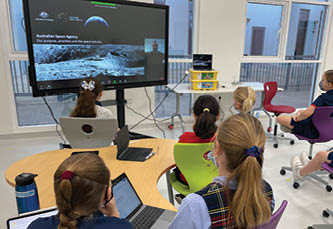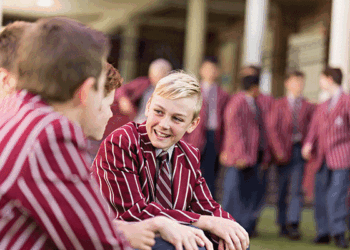A space problem worth solving – across the globe
In January 2022, at the World Expo in Dubai, One Giant Leap Australia presented The Connecting Minds Project in collaboration with the Australian Department of Foreign Affairs and Trade’s (DFAT) Council for Australian Arab Relations (CAAR). This inaugural event showcased collaborative STEM projects from international school partnerships between Australia and the United Arab Emirates. Ten schools teamed up to solve STEM challenges of the future, focusing on human space exploration and Mars. The project culminated in a hybrid event at the Dubai Expo hosted at the Australia Pavilion with contributors also participating online from across the UAE and Australia.
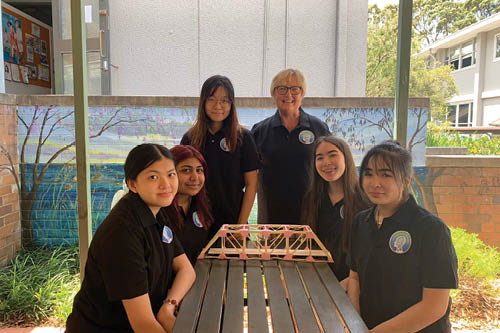
The Connecting Minds Project is a flexible, purpose driven education program that focuses on networking, problem solving and cutting-edge space Science, Technology, Engineering and Mathematics (STEM) research. Educators partnered globally and groups of students worked collaboratively on their ‘space missions’. Their innovative projects focused on STEM skill development, team work, interpersonal and intercultural communication, building international networks and collaboration.
The overarching objective of The Connecting Minds Project is to build STEM skills capability and capacity of students and educators between the two countries (and ultimately further afield) to improve the global uptake of space and high-tech STEM careers. The process has promoted diversity, problem solving, critical and creative thinking, innovation, team building and cooperation in the workforce of tomorrow. Support and guidance for each project was provided by One Giant Leap Australia to students and educators.
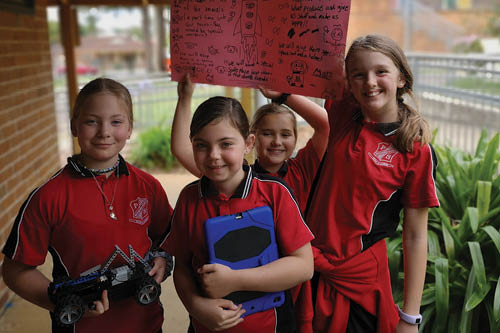
There was an enthusiastic uptake from Australian and Dubai based schools. The Scots School, from Albury New South Wales, partnered with the Westminster School in Dubai. Together they explored creating 3D printed habitat components, to be fabricated on Mars. The first Mars habitat will be transported by a number of rockets. Once the building lands on the surface of Mars, robots will need to assemble it. These students designed a prefabricated building and worked on ways to construct it once it landed on Mars using robots. Meanwhile, to move people and products more easily around Mars, bridges need to be constructed. That’s why Moorefield Girls’ High School (NSW) alongside the Winchester School (Dubai) studied models of bridges and came up with some interesting designs!
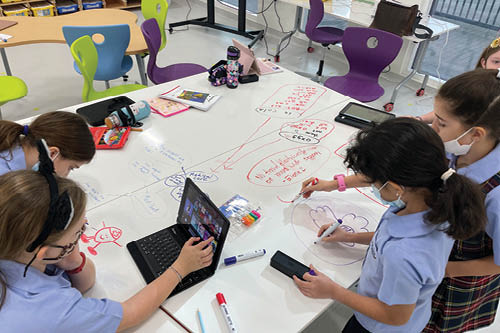
Meanwhile, Wiley Park Girls’ High School (NSW) and GEMS Modern Academy (Dubai) identified the challenges of sustainable living on Mars, looking at the necessities and coming up with solutions. 3D Models and blueprints were created as students examined the construction of Mars colonies and how energy can be used sustainably. Sustainable energy was also a focus of Sydney’s Norwest Christian College who worked with Al Salam Community School. This collaboration explored carbon capture to make rocket launching a carbon neutral activity. Researching pollution and affecting our atmosphere. This research looked at types of rockets, rocket fuels, payloads and black carbon emissions. Finally, Richmond North Public School (NSW) worked alongside the Australian International School in Dubai to design concepts for Mars habitats utilising various physical and online tools. Through “Cospaces” and “Minecraft”, students designed and created Mars habitats. Concerns around animal transport and a sustainable, happy environment were also a focus.
Students worked for six weeks on their projects with regular online meetings. Whilst a large component was the exchange of STEM ideas, research and collaboration, the students also developed strong relationships and experienced authentic cross-cultural understanding. Working with students from other countries and different ages is true diversity and from this innovation occurs. The students found that they had more in common than they might have otherwise thought. Participants in both hemispheres were fascinated by not only by how the other worked, but by how they lived and the environment around them. Students from the Westminster School, for example, were intrigued by the stories shared by the Scots School students about kangaroos near their houses, our poisonous spiders and the vegetation of the New South Wales countryside. Equally, the Australian students were engaged with stories from Dubai and what it is like to live simultaneously by the sea and by the desert.
As the projects were to be presented at a hybrid event at the Dubai Expo, students and teachers collected all types of multimedia from their projects over the duration of the program. Having collected video, photographs, schematics and recording interviews, each school submitted their material to One Giant Leap Australia to be curated and compiled into a narrative to present at the cumulative event in Dubai. This made it possible for all the students involved to be represented to the guests invited to the Australian Pavillion’s Wattle Room in January.
On 30 January, guests assembled in the Wattle Room at the Australia Pavilion in Dubai. Guests included DFAT’s Anita Downey. Participating schools from the UAE and Australia tuned in online and presented their projects and accompanying videos. Both students and teachers were able to interact with each other and the guests to discuss their projects and receive feedback from Space Industry professionals. Finally, all participants were treated to a workshop from renowned composer Amanda Lee Falkenberg, known for her Moons Symphony, addressing creativity and science.
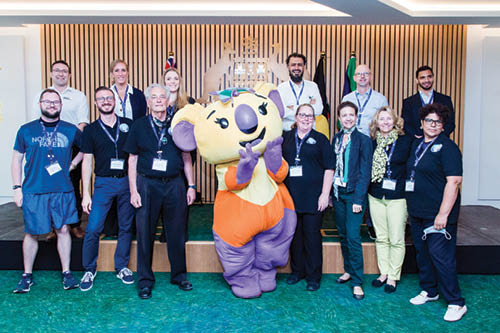
The inaugural Connecting Minds Project 2021/22 was a resounding success, from the collaboration between schools across the globe to the hybrid event at the World Expo in Dubai streaming to and from students in various locations. The best result, however, was the impact the program had on the students themselves. “I have loved connecting with the people in Dubai”, said Ivy from Richmond North School. While students in Dubai noted that they want to pursue a career in the Space industry, thanks to their collaboration with their Australian counterparts, so “we can learn more about the Martian environment so we can actually colonise the area” (student feedback). As the students at Wiley Park Girls School say, “think big, share your ideas with others.”
Moving forward, The Connecting Minds Project is something that One Giant Leap Australia plans to expand further across the globe, aiming to incorporate the US, Europe and Asia. There are two upcoming missions planned for The Connecting Minds Project, August – December 2022 and February – June 2023. Individualised support and guidance for each project will be provided by The Connecting Minds Project team from One Giant Leap Australia.
If your school would like to participate simply visit;
www.onegiantleapfoundation.cm.au/the-connecting-minds-project
Main picture Students at the Australian International School in Dubai enjoy a presentation with Enrico Palermo – Australian Space Agency Head.
